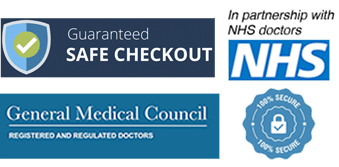Managing Frequent Short-term Absences In The Workplace
Managing frequent short-term absences in the workplace is a challenge many employers face. These absences can greatly affect a company’s productivity and the morale of other employees.
Our article will offer practical advice on how to tackle this issue, from understanding the reasons behind it to making effective changes that benefit everyone involved. Read on for helpful insights.
Understanding the Causes of Frequent Short-Term Absences

Work factors, employee discussions, absence tracking, pattern identification are key to understanding short-term absences. Dealing with workplace issues and finding support can significantly reduce frequent absences.
Impact of Workplace Factors
Some things at work can make people feel sick more often. If the place where we work isn’t safe or makes us feel unhappy, this can lead to being ill. For example, if someone is always feeling picked on (bullying), they might start feeling sad or sick and not come to work.
Health and safety are very important here.
Talking to a worker about why they miss work helps a lot. HR professionals use their knowledge to find out what’s wrong and how to help. They look at records of when someone wasn’t at work to see any patterns.
This way, they can make changes like offering flexible working hours or finding ways for them not to feel overwhelmed by too much work (reassessing workloads). Making small changes at work, like adjusting how much there is to do, can make people happier and healthier.
Discussion with Employee
After looking into how the workplace might cause short-term absences, it’s crucial to talk directly with employees. Having a one-on-one meeting allows managers to understand personal circumstances that may affect attendance.
During these talks, HR professionals can show empathy and offer support, aiming to find out if work-related issues play a role in their absences. This approach shows the employee they are valued and not just another number.
Talking also opens up opportunities for making reasonable adjustments in line with the Equality Act 2010. Adjustments could be as simple as changing their work hours or providing special equipment.
If an employee’s absence patterns suggest an underlying health issue, referring them to occupational health services or suggesting mediation might help address their concerns effectively.
The goal is to ensure employees feel supported and understood, reducing future absenses and boosting morale within the team.
Recording and Monitoring Absences
Keeping track of when staff are off sick helps a business run smoothly. It also shows patterns that might need a closer look. Here’s how to do it right:
- Start with a clear policy: Make sure everyone knows how to report sickness. This includes who they should tell and by what time.
- Use technology: Software makes tracking easy. You can see trends at a glance without digging through paperwork.
- Hold return-to-work interviews: Chat with your team member when they come back. This can highlight ongoing issues affecting their health.
- Keep records accurate: Write down each absence, including the reason and length of time off. Accurate details are critical for spotting patterns.
5 Came up with trigger points: Decide on specific levels of absence that will cause a review or action. This keeps everyone fair and consistent.
6 Offer support: If someone is often sick, find out why. Maybe they need adjustments at work or help from a doctor or nurse.
7 Consider training for managers: Understanding sickness absence management is key for your leaders. They play a big role in supporting their teams.
8 Review job roles and workloads: Sometimes the job itself is too much, causing stress or physical strain. Reassess tasks to prevent this.
9 Stay within the law: Know the rules about sick pay, medical certificates, and disability discrimination to avoid legal trouble.
10 Connect with experts if needed: For complex cases, talk to medical professionals like physiotherapists or mental health experts.
11 Update risk assessments regularly: Make sure you’re not missing anything that could cause harm to your staff’s well-being.
Identifying and Addressing Patterns
After we record and watch absences, the next step is finding and solving patterns. This helps us tackle frequent short-term sick leaves in a better way.
- Look at the employee’s attendance history to spot any regular sick leave patterns. You might notice they often call in sick on Mondays or after holidays.
- Compare absence records across different teams to identify if certain workplace factors are causing more absences. Stressful work environments or high workloads can lead to more sick days.
- Talk to employees about their absences in a supportive way. This can uncover personal challenges or work-life balance issues that might be leading to their frequent short-term sickness.
- Use trigger points, which are set levels of absence that prompt a review with the employee. This approach is recommended by experts like CIPD for effective absence management.
- Offer mediation and counseling if you find an employee’s absences are due to workplace disputes or mental health issues like stress or anxiety.
- Reassess workloads and provide additional training and support where needed. Employees overwhelmed by their tasks may take more sick days.
- Check for any signs of discrimination in the workplace that could be affecting employee wellbeing and leading to more short-term absences.
8 Tackle any risks linked to the job role that might cause illness or injuries leading to absences, ensuring a safe working environment for everyone.9 Keep records updated and monitor trends even after implementing solutions, as new patterns might emerge.
Using these steps ensures we handle frequent short-term sickness effectively, boosting productivity and morale while adhering to relevant laws like those enforced by ACAS regarding employment rights and sick notes requirements.
Managing Frequent Short-Term Absences
Address frequent short-term absences through mediation and counseling, reassessing workloads, and providing training and support to employees. Learn more about effective strategies for managing absences in the workplace.
Mediation and Counseling
Mediation and counseling are key steps in helping employees who often miss work. This process involves sitting down with an employee to talk about their frequent absences. A mediator, someone trained to help solve disagreements, might join this meeting.
They can make sure the conversation stays positive and productive. In these sessions, workers can share if something at work is making them feel unwell or stressed.
Counseling offers a private space for employees to discuss deeper issues that may cause their absences, such as mental illness or other health problems. Experts in worker health and happiness will guide these talks.
They have the skills and understanding to offer support tailored to each person’s needs. This might include advice on managing workload, stress relief techniques, or getting help from healthcare professionals for terminal illnesses or chronic conditions linked with frequent sickness absences.
Reassessing Workloads
Managers must look at how much work their team has. Sometimes, the reason for many short-term absences is that people have too much to do. If an employee’s workload is too heavy, they might get stressed and fall ill more often.
Managers can talk with each employee about their tasks. They can then adjust the work if it’s too much. This helps employees stay healthy and not miss work.
Offering extra training also helps employees manage their workload better. Training gives them the skills and confidence to do their jobs right. It shows that the company cares about their wellbeing and expertise, leading to fewer sick days taken.
Providing Training and Support
Offering guidance and help to your team is crucial. Teach them ways to manage stress and improve their health. This can cut down on the times they are away sick. Show them how using time off wisely can boost their wellbeing and job satisfaction.
Training programs that cover these topics are helpful.
Support goes beyond training sessions. Have regular one-on-one chats with each person in your team. Talk about what support they need from you to stay healthy and feel good at work.
Sometimes, adjusting a workload or changing some tasks makes a big difference for someone’s health.
Next, we’ll explore legal considerations for handling short-term absences at work.
Legal Considerations for Short-Term Absence Management
When it comes to managing frequent short-term absences in the workplace, legal considerations play a crucial role. Understanding relevant laws and regulations is essential for navigating this issue effectively.
Additionally, obtaining a sick note for work is an important aspect of short-term absence management.
Relevant Laws and Regulations
Employers must adhere to the Employment Rights Act 1996, which entitles employees to take time off work due to illness or injury. The act dictates that employees are entitled to Statutory Sick Pay (SSP) if they meet certain criteria.
Additionally, the Health and Safety at Work etc. Act 1974 requires employers to ensure the health, safety, and welfare of their employees as far as is reasonably practicable. This includes providing a safe working environment and implementing measures to mitigate risks that may cause frequent short-term absences.
Understanding these regulations enables employers to appropriately manage frequent short-term absences in compliance with legal requirements while supporting employee wellbeing and maintaining productivity levels.
Now moving on to “Obtaining a Sick Note for Work“…
Obtaining a Sick Note for Work
When it comes to obtaining a sick note for work, employees are legally entitled to self-certify their absence for up to seven consecutive days. After this period, they need to provide a “fit note” from a doctor.
This fit note is essential in ensuring that the employee’s absence is properly recorded and considered under the organisation’s sickness absence policy. It provides details about the individual’s health condition and specifies if they are unfit for work or may be fit with certain adjustments, thereby helping employers make informed decisions about managing the employee’s return to work and any necessary adjustments required.
Relevant Concepts: Doctor’s Note, Fit Note
Conclusion
Frequent short-term absences in the workplace are influenced by various factors. Addressing these proactively can improve employee morale and productivity. Effective management involves understanding legal considerations, providing support, and monitoring absences.
By taking a proactive approach, organisations can reduce the impact of frequent short-term absences on their overall performance.
FAQs
1. What does managing frequent short-term absences in the workplace involve?
Managing frequent short-term absences involves tracking and addressing regular, brief periods when staff are not at work.
2. How do these absences affect salary?
Frequent short-term absences can impact salary as businesses may need to cover costs for temporary replacements or overtime pay for other team members.
3. Can a company reduce the number of these types of absences?
Yes, companies can manage and potentially reduce such absence by implementing clear policies, offering flexible working options, and promoting a healthy work environment.
4. Does a worker’s salary get docked if they have too many short-term absences?
The effect on an employee’s salary due to frequent short-term absence depends on the company’s policy; it is important to review this with human resources or within your contract.


